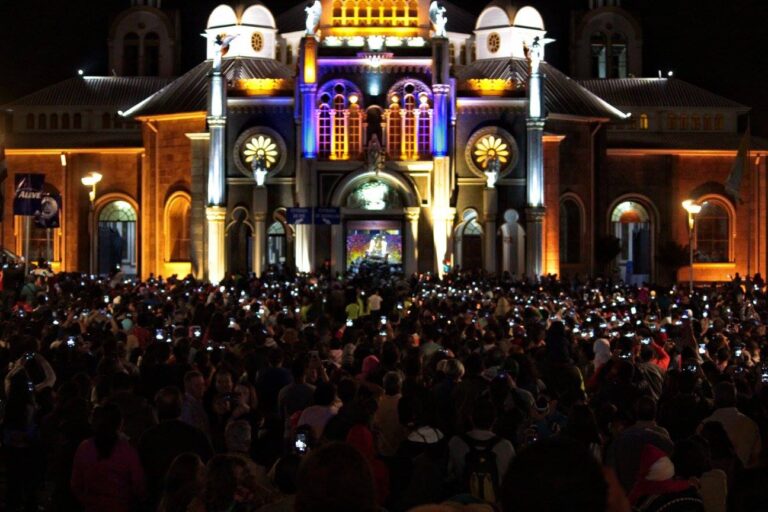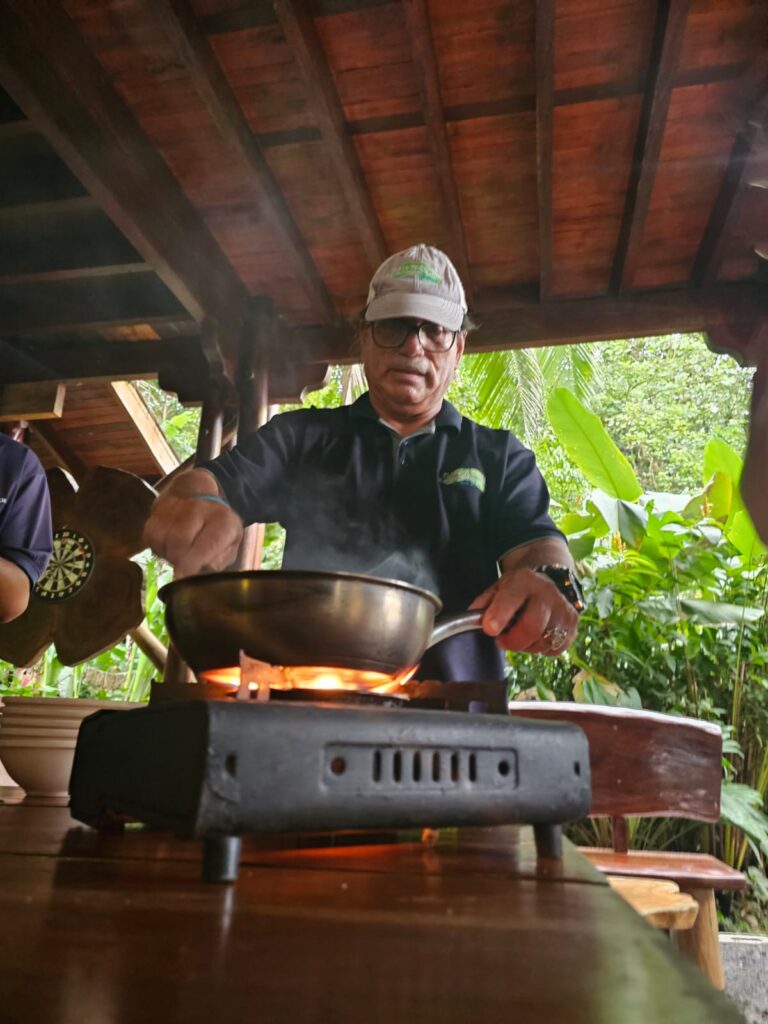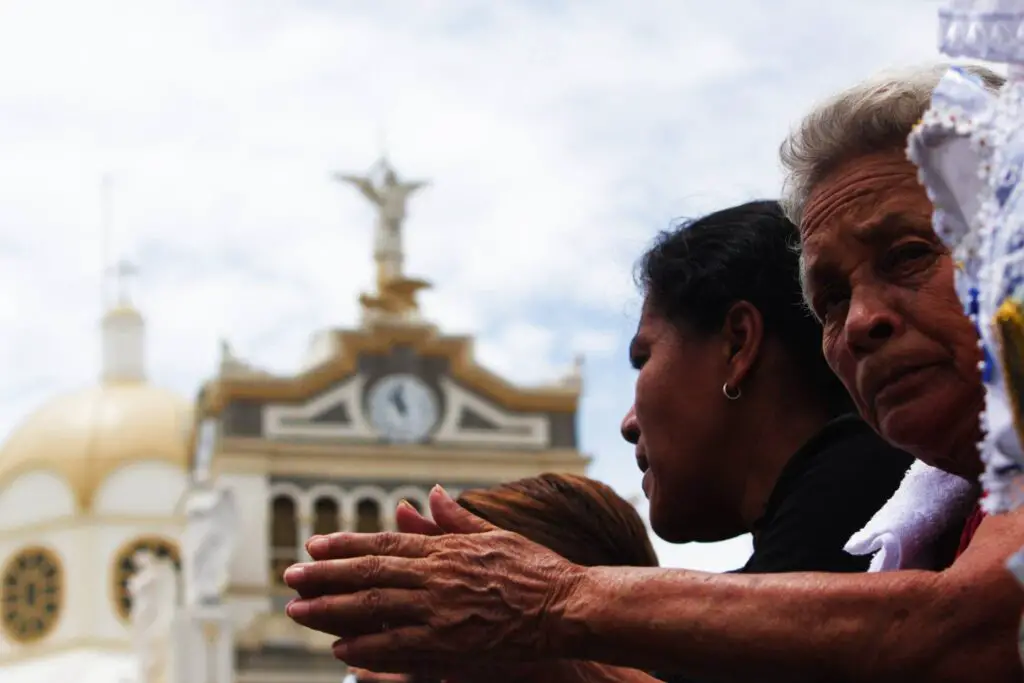A few days ago, I had the privilege of visiting Finca Rosa Blanca, a hidden gem nestled among the coffee plantations of Santa Bárbara de Heredia, about 45 minutes from the capital. The visit took place within the framework of a technical tour featuring several speakers and attendees of the Sustainable & Social Tourism Summit 2025, an event of which our company, Green Circle Experience, is proudly a sponsor.
The canton of Barva is, in itself, a pleasant place—a sort of suburb of the Greater Metropolitan Area (GAM)—located at around 1100 meters above sea level, making it ideal for coffee cultivation. We were greeted by Glen JeanPaul, the owner, who, together with his mother, purchased what was until then a traditional coffee farm in 1986. Rows of coffee shrubs stretched out almost like a monoculture (aside from a few occasional fruit trees planted to provide shade).
The architecture of the hotel already makes it interesting. A simple yet inviting lobby with a magnificent view of the Central Valley boldly declares the altitude at which we find ourselves. The surroundings clearly indicate that we are not in a massive, traditional hotel, but in a personalized establishment with a strong focus on individualized hospitality. And just as you step in, a dozen coffee sacks immediately communicate the theme and pride of the hotel—the golden bean that built Costa Rica.
A Story of Vision and Commitment Finca Rosa Blanca was born from the dream of a family passionate about art, sustainability, and, of course, coffee. More than 40 years later, that dream has blossomed into a property that masterfully combines luxury hospitality with deep ecological practices, earning international accolades and the respect of the national tourism sector.
There, the farm, the hotel, and the coffee are one and the same.
Organic Coffee with a Costa Rican Soul During our tour of the coffee plantations, we strolled among bushes of Geisha, Caturra, and Obatá while learning about the organic and biodynamic methods they implement. I witnessed how traditional agricultural practices are combined with clean technologies and regenerative solutions, such as the use of compost, biological corridors, and natural shading.
While traditional coffee plantations consist of planting rows of coffee trees with cleared paths—devoid of any vegetation—in order to optimize production and harvest per square meter, at Finca Rosa Blanca the jungle shares the land with the coffee plants. The result is a dense forest cover, rich in the biodiversity of both flora and fauna.
Glen, the owner and our guide, mentioned that the initial bird count on the farm was barely around 40 species; however, after implementing changes and planting native and endemic trees, the farm now hosts more than 190 species visible in the area. This is particularly remarkable for a place just 40 minutes away from the hustle and bustle of San José.
We shared the tour of the farm with a group of summit visitors, predominantly Mexicans and Hondurans. Both countries, like Costa Rica, are coffee producers. Although their socioeconomic and environmental contexts differ, I must say I was pleasantly surprised by how genuinely impressed they were—and by the seemingly innocent questions they asked, such as why there was no irrigation system in place.
In Costa Rica, our abundant and copious rainy season makes it unnecessary to establish irrigation systems (for all crops). On the contrary, practices like Glen’s—enhancing forest cover—help the land process excess water more effectively, thereby preventing landslides. Moreover, the processes for caring for and controlling coffee diseases are carried out naturally and organically. And whenever it is necessary to apply chemical compounds, these are organic and have zero collateral impact on the species cohabiting the area.
It struck me that, too often, food production relies on extensive industrial interventions and complex laboratory chemicals formulated solely to solve a problem, with little or no regard for the collateral and residual damage they may cause.
The cupping experience was, without a doubt, one of the highlights. Not only because of the exceptional quality of their coffee—winner of multiple awards at the World Coffee Challenge—but also because of the story that accompanies each cup: a tale of respect, resilience, and passion for Costa Rica.
Slow, Sustainable, and Purposeful Tourism As a tourism professional, it was immensely gratifying to see how Finca Rosa Blanca perfectly aligns with the four pillars we advocate at People of Costa Rica, Green Circle Experience, Costa Rica Species, and Paradise Products Costa Rica:
- Slow tourism, because it invites you to pause, breathe, savor, and understand.
- Sustainable tourism, thanks to its perfect score on the Tourism Sustainability Certification (CST) and its exemplary practices.
- Social tourism, due to its genuine connection with the local community—from providing dignified employment to supporting educational initiatives.
- Community tourism, because it involves neighbors, artisans, guides, and producers as the main actors in the experience.
A Model to Follow Finca Rosa Blanca is more than just a boutique hotel or a coffee farm—it is a model to follow. It embodies that deep Costa Rica many of us wish to preserve and showcase to the world; a Costa Rica that champions art, the land, its people, and conscious decision-making.
At People of Costa Rica, I take pride in sharing stories like that of Finca Rosa Blanca—stories that remind us that tourism doesn’t have to be extractive; it can be regenerative, healing, and profoundly human.
I invite all those who seek to experience Costa Rica with meaning and beauty to visit this place. I promise that you will leave transformed, just as I did.













